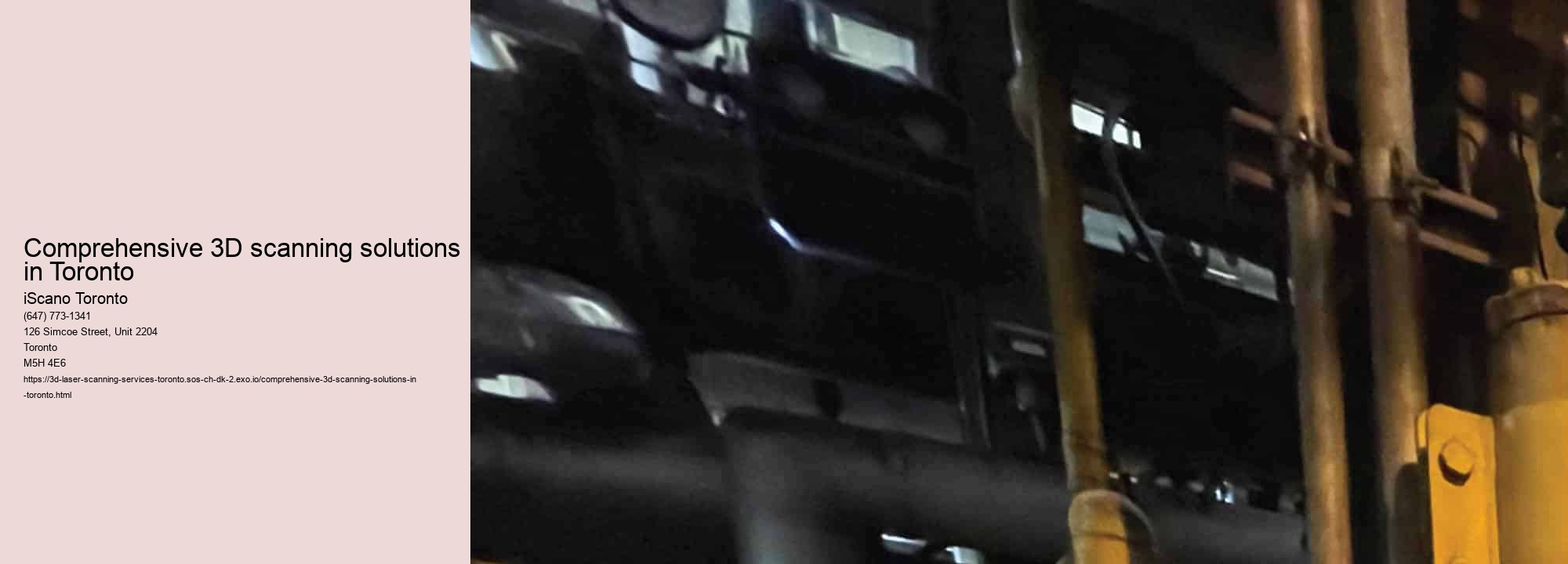Constructing the Future: Integrating 3D Laser Scanning Services right into Construction Projects
Advanced 3D laser scanning solutions in Toronto .Intro:
In the ever-evolving landscape of building and construction projects, accuracy and efficiency have actually come to be paramount. One innovation that has actually emerged as a game-changer hereof is 3D laser scanning services. By capturing thorough spatial information of physical frameworks, 3D laser scanning transforms the way construction jobs are intended, implemented, and handled. In this article, we explore the significance of integrating 3D laser scanning services right into construction projects and just how it leads the way for constructing the future.
Understanding 3D Laser Scanning Services:
Prior to diving right into its integration into building projects, it'' s crucial to grasp the principles of 3D laser scanning services. Essentially, 3D laser scanning entails using high-resolution laser beam of lights to record the shape and shapes of physical objects or atmospheres. These scanners produce accurate factor clouds, which are after that made use of to create detailed 3D versions of the checked area.
Assimilation into Construction Tasks:
Now, let'' s explore exactly how 3D laser scanning services seamlessly integrate right into building and construction jobs, reinventing numerous stages of the procedure.
- Pre-construction Preparation:
Throughout the first preparation phase of a building project, exact site information is important. Typical checking techniques can be lengthy and may do not have the level of detail required for comprehensive planning. Here, 3D laser scanning radiates by swiftly catching specific measurements of existing structures, topography, and energies. This information supplies architects and engineers with an extensive understanding of the site, allowing them to make informed choices and maximize the style procedure.
- Style and Design:
In the style and design stage, 3D laser scanning promotes seamless partnership and visualization. By creating thorough 3D designs of the site, developers can accurately examine spatial restraints, identify prospective clashes, and optimize style components. Furthermore, these versions serve as useful communication tools, permitting stakeholders to envision suggested layouts in the context of the existing atmosphere.
- Construction Implementation:
Throughout the building and construction stage, 3D laser scanning plays a crucial duty in guaranteeing precision and quality assurance. By periodically scanning the building site, task supervisors can monitor development, confirm dimensions, and detect inconsistencies from the original strategy. This real-time information makes it possible for proactive decision-making, decreases mistakes, and boosts general job effectiveness.
- As-built Paperwork:
Upon conclusion of the construction project, exact as-built paperwork is necessary for future upkeep and restorations. Traditional techniques of recording as-built conditions usually cause errors and inconsistencies. 3D laser scanning uses an exceptional solution by capturing extensive information of the completed framework with unrivaled accuracy. This electronic documents serves as a beneficial asset for facility monitoring, restoration preparation, and historic conservation.
Benefits of Integrating 3D Laser Scanning Services:
The integration of 3D laser scanning services into building tasks offers a myriad of benefits, including:
- Boosted Precision: 3D laser scanning catches comprehensive spatial data with millimeter-level accuracy, decreasing mistakes and disparities throughout the task lifecycle.
- Enhanced Performance: By streamlining procedures and promoting real-time decision-making, 3D laser scanning accelerates job timelines and decreases costs.
- Enhanced Safety: With the capacity to remotely capture information in hazardous or unattainable areas, 3D laser scanning improves worker safety and security and decreases on-site dangers.
- Comprehensive Documents: Detailed 3D designs and factor clouds function as comprehensive documents, assisting in future upkeep, renovations, and historical conservation.
- Enhanced Partnership: By giving stakeholders with visual representations of the task website, 3D laser scanning promotes cooperation and alignment across teams.
Situation Studies:
To show the concrete impact of integrating 3D laser scanning services into construction jobs, allow'' s take a look at a few real-world study:
-
High-Rise Construction: In a high-rise building and construction job, 3D laser scanning was made use of to accurately measure existing frameworks and energies, allowing architects to make around constraints and enhance space usage. This caused substantial price savings and a streamlined building procedure.
-
Historic Renovation: When renovating a historic spots, 3D laser scanning was used to record detailed as-built problems, preserving the framework'' s building honesty. This electronic paperwork assisted in careful repair efforts and ensured compliance with preservation guidelines.
-
Framework Advancement: In a large-scale facilities development job, 3D laser scanning was used to check development and identify deviations from the original design. By recognizing possible issues early, project hold-ups were lessened, and construction top quality was promoted.
Verdict:
Finally, the assimilation of 3D laser scanning services right into construction jobs stands for a paradigm change in the sector. By giving unequaled accuracy, efficiency, and documents capacities, 3D laser scanning leads the way for developing the future of building and construction. As innovation remains to progress, welcoming developments like 3D laser scanning will be important for remaining ahead in an increasingly open market.
By optimizing procedures, improving partnership, and making sure precision throughout the project lifecycle, 3D laser scanning services empower construction professionals to deal with intricate difficulties with confidence, eventually providing superior results and forming the developed atmosphere for generations to come.
